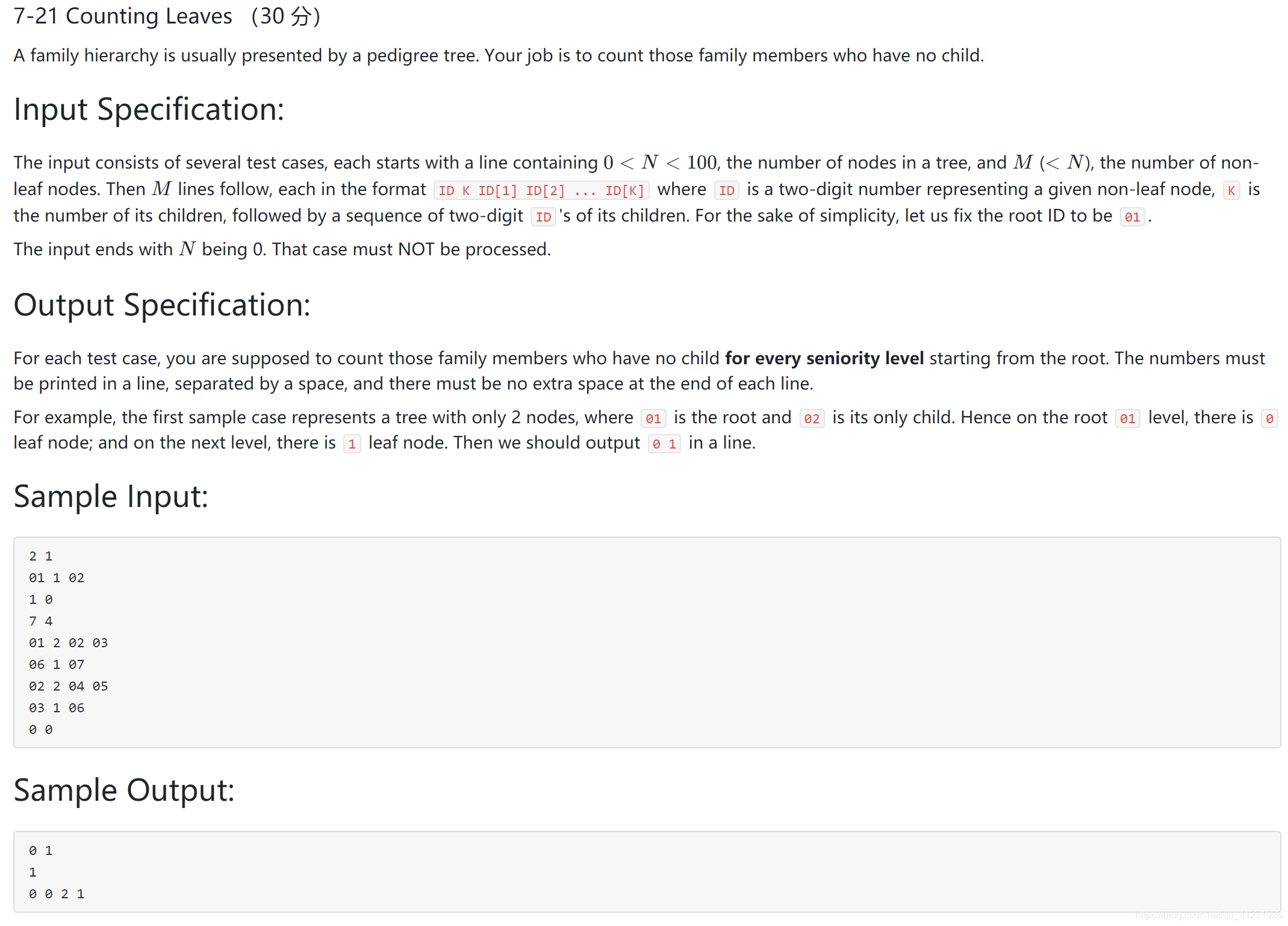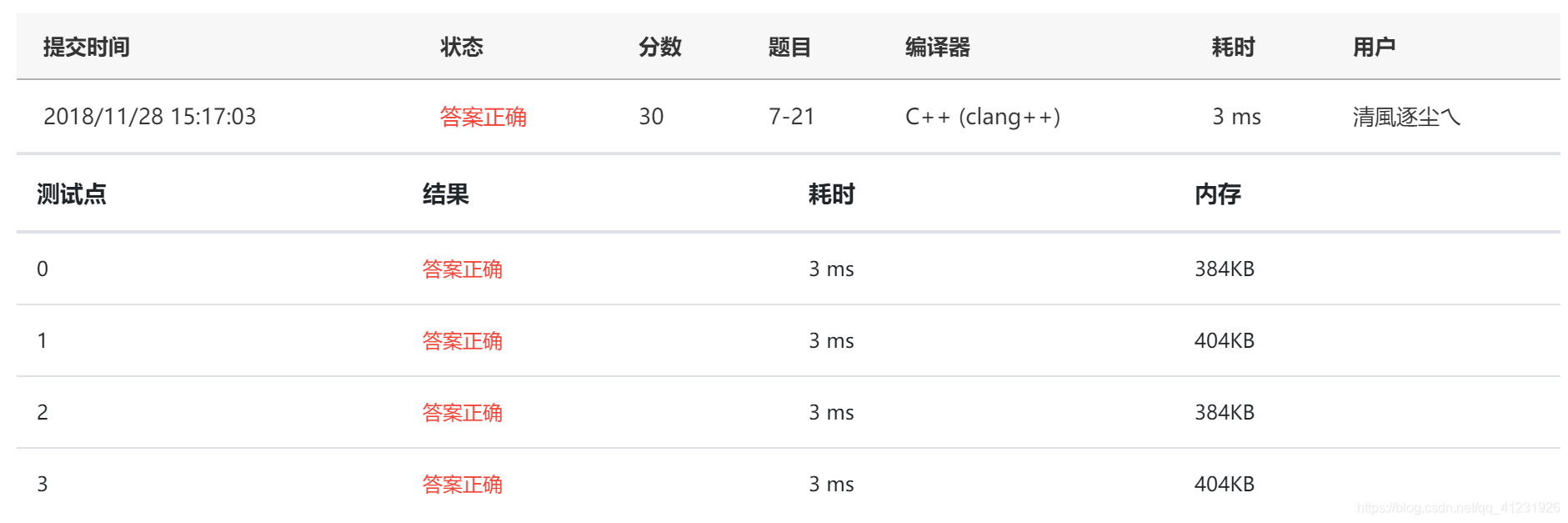我的Data Structures and Algorithms代码仓:https://github.com/617076674/Data-Structures-and-Algorithms
原题链接:https://pintia.cn/problem-sets/16/problems/683
题目描述:

知识点:树的静态表示法、树的层序遍历
思路:层序遍历树,记录每一层的叶子节点数量
本题和PAT-ADVANCED1004——Counting Leaves的解法一模一样,只不过PAT-ADVANCED1004——Counting Leaves中一个输入文件只包含一个测试用例,而本题中一个输入文件包含多个测试用例。
每个测试用例的时间复杂度和空间复杂度都是O(N)。
C++代码:
#include<iostream>
#include<vector>
#include<queue>
using namespace std;
struct node {
vector<int> children;
};
int N, M, ID, K, child;
void bfs(node* Node, vector<int> &levelLeaves);
int main() {
while(true) {
scanf("%d %d", &N, &M);
if(N == 0) {
break;
}
node Node[N + 1];
for(int i = 0; i < M; i++) {
scanf("%d %d", &ID, &K);
for(int j = 0; j < K; j++) {
scanf("%d", &child);
Node[ID].children.push_back(child);
}
}
vector<int> levelLeaves;
bfs(Node, levelLeaves);
for(int i = 0; i < levelLeaves.size(); i++){
printf("%d", levelLeaves[i]);
if(i != levelLeaves.size() - 1){
printf(" ");
}else{
printf("\n");
}
}
}
return 0;
}
void bfs(node* Node, vector<int> &levelLeaves) {
queue<int> q;
q.push(1);
while(!q.empty()) {
int qSize = q.size();
int count = 0;
for(int i = 0; i < qSize; i++) {
int u = q.front();
q.pop();
if(Node[u].children.size() == 0){
count++;
}
for(int j = 0; j < Node[u].children.size(); j++){
q.push(Node[u].children[j]);
}
}
levelLeaves.push_back(count);
}
}C++解题报告:









 本博客介绍了一种使用C++实现的树的层序遍历算法,用于统计每层的叶子节点数量。该算法适用于处理多个测试用例,并详细展示了如何通过广度优先搜索(BFS)遍历树结构,同时记录各层叶子节点的数量。
本博客介绍了一种使用C++实现的树的层序遍历算法,用于统计每层的叶子节点数量。该算法适用于处理多个测试用例,并详细展示了如何通过广度优先搜索(BFS)遍历树结构,同时记录各层叶子节点的数量。
















 454
454

 被折叠的 条评论
为什么被折叠?
被折叠的 条评论
为什么被折叠?








